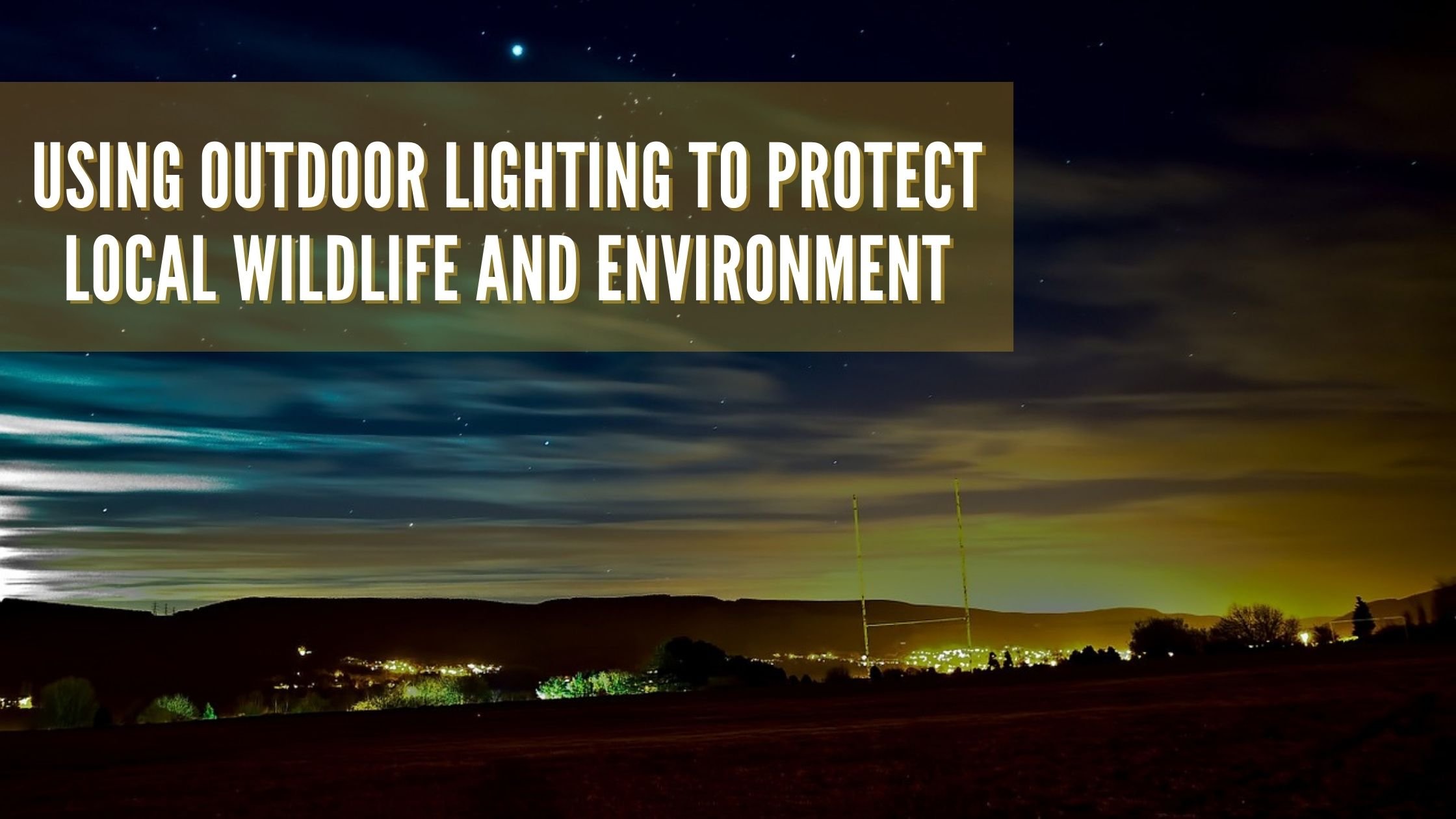


Outdoor lighting is not just valuable for landscaping companies. It has also brought a multitude of advantages to today’s consumers. However, we wonder if these outdoor lighting fixtures adversely affect the nearby wildlife and our environment. A large number of studies reveal that using outdoor lighting often disrupts the natural flow of wildlife. For instance, sea turtles are affected by the bright lights of condos, and insects circle bright outdoor lights.
People who work at the International Dark-Sky Association believe that our ecosystem is being affected by the continual usage of extra lights, which could pose serious risks for wildlife to function properly at night. It is a well-known fact that predators utilize light to hunt, whereas prey species take cover in the darkness. According to scientists, cloudy skies near cities and towns are now thousands of times brighter than they were a couple of centuries back, drastically impacting nocturnal ecology and wildlife.
Artificial lights create a glare that has the potential to disturb the nighttime mating rituals of several kinds of amphibians, ultimately contributing a major role in the decline of many species. Birds frequently go astray at night if they are incapable of differentiating between moonlight and outdoor night. This risk is particularly significant for birds that hunt at night, as the light affects their night vision.
Although there is a lot of negative information on outdoor lighting, you can still install it by keeping all crucial ecological facts in mind. You should implement outdoor lighting projects by considering the local wildlife, weather, and location. You must implement all projects after making them as eco-friendly as possible. Cover all important aspects of installing outdoor lighting without affecting the natural flow of wildlife. Choosing the right kind of light for your outdoor lighting projects is a major concern.
Many of us are aware of incandescent or compact fluorescent bulbs for indoor lighting. However, outdoor lighting requires different or more industrial light sources. Although shop owners and designers like the light quality of incandescent bulbs, the amount of electricity needed to run them makes them a less preferred option. Moreover, the fact that 90% of the energy they burn gets wasted greatly impacts the environment.
Hence, the most popular light sources for preserving wildlife are LPS (low-pressure sodium), HPS (high-pressure sodium), metal halide, and LEDs (light-emitting diodes). LPS is extremely energy efficient. However, it emits just a narrow spectrum of pumpkin-colored light. Nonetheless, it continues to be one of the most preferred choices for lighting in environmentally sensitive areas and astronomical observatories.
Several cities use HPS for street lighting. Even though it produces an orange-colored light, the coloring is closer to ‘natural light' than that of LPS. If people prefer to use white light in an area, then LEDs and metal halides are the most preferred choices. LED lighting is a good option for outdoor lighting since you can dim it according to your requirements. You can easily turn them off or reduce the intensity to match the needs of an occasion. This way, we can save energy and reduce the light pollution emitted during the night.
With the launch of LED fixtures and bulbs, more ways to help our environment and wildlife have emerged. If we know how to use this kind of lighting properly, we can overcome many negative effects that have been damaging our natural flow. Once people have decided the kind of outdoor lighting they like to work with, they should complement the bulbs with the right kind of fixtures. Although hundreds of different fixtures are available to serve different needs, only a few are beneficial for protecting wildlife and the surrounding environment.
Moreover, light color also matters. In addition to having the right kind of lighting and fixtures, it is important that you can choose the right color of light. Both metal halide lights and LEDs present sufficient amounts of blue light. Since blue light brightens the night sky more than other types of light, it is important to restrict the percentage of blue light the bulb emits into the surroundings. Research has established a definite relation between blue light exposure and harmful effects on human health and wildlife. Hence, according to IDA recommendations, it is beneficial to use a light that has a color temperature of fewer than 3,000 Kelvins; however, shooting for 2200 Kelvins or less is preferred.
It is important to discuss all possible options for environmentally safe outdoor lighting, such as dimmers and eco-friendly lighting fixtures. To protect our wildlife and environment, we must use different levels of lighting for all outdoor lighting projects. For instance, we can choose a soft mood or low lights for path lighting.
About the Author: Elena is an experienced content writer and an energy efficiency specialist. She has written extensively on the safety and legal considerations of outdoor lighting and provides recommendations on which lights people should install. She runs fmdigitalgroup.com.au, a premium distributor of LED lighting.
